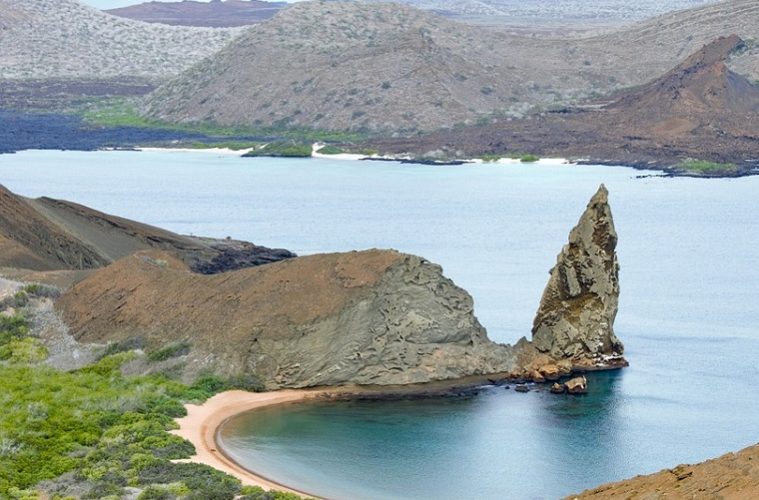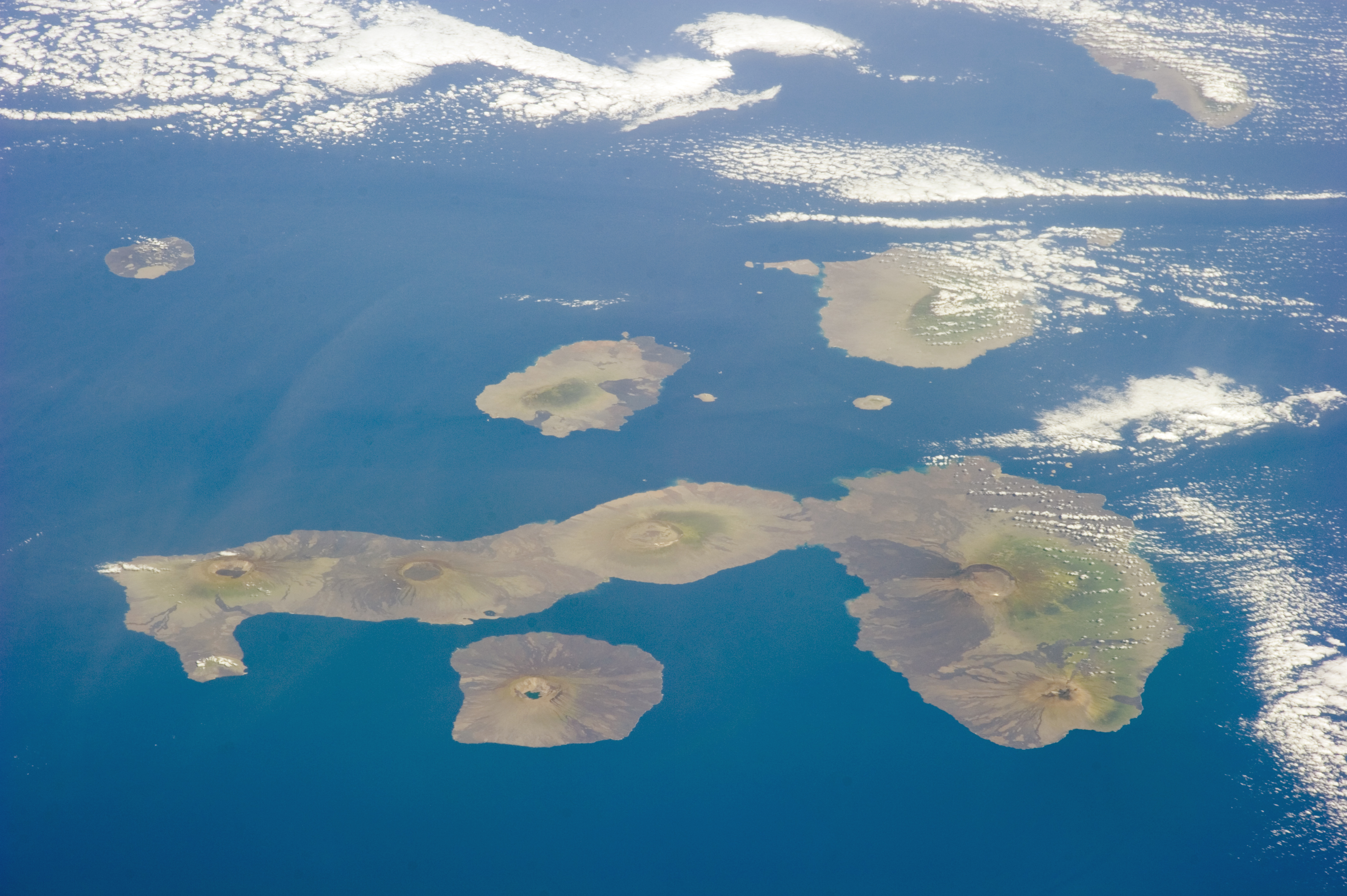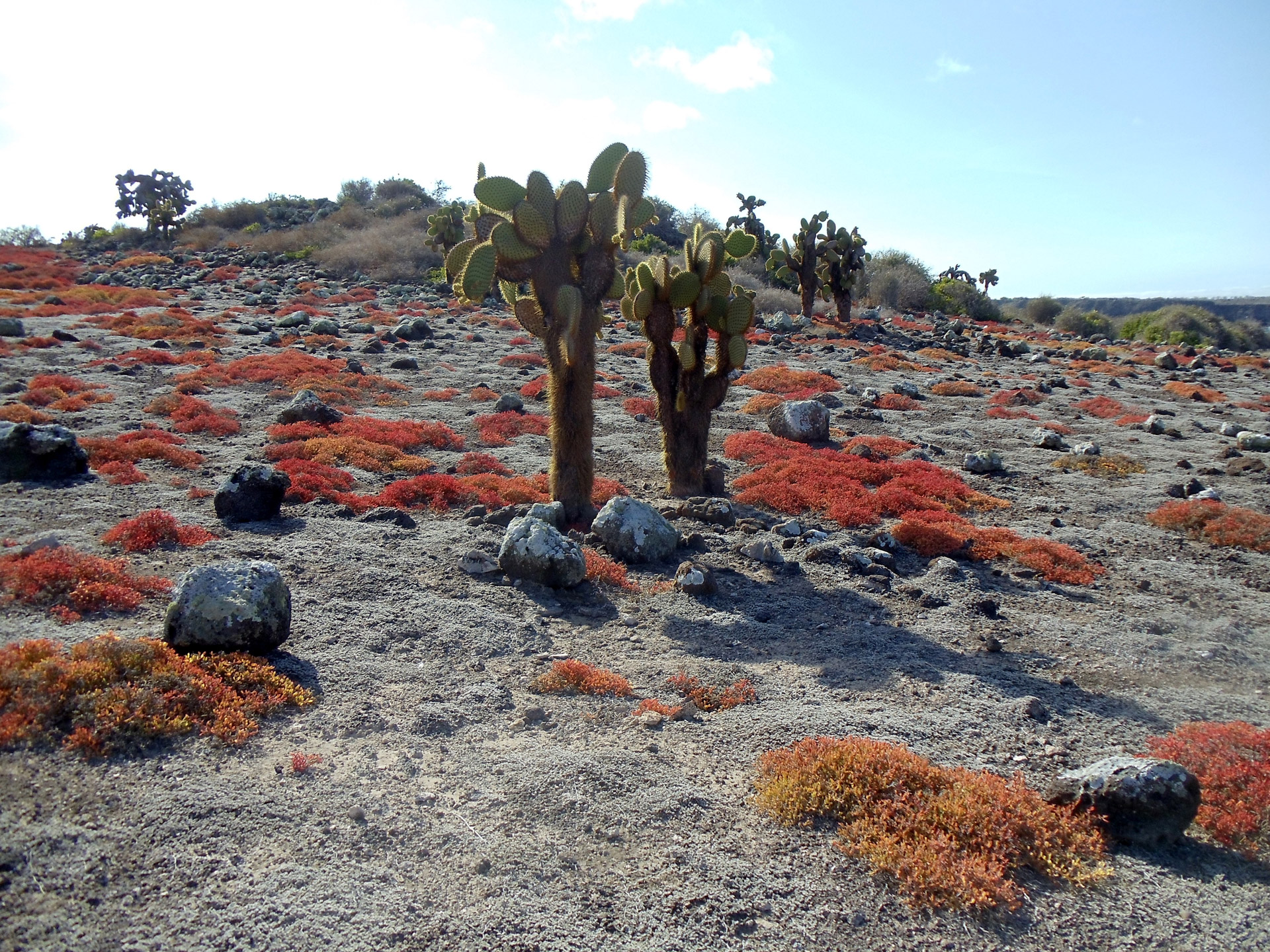The Galapagos Islands, part of the Republic of Ecuador, sit either side of the equator in the Pacific Ocean. They are famous for their myriad species of wildlife, studied by Charles Darwin, and the only place in the world where many of them can be found. For them, humans are merely slightly annoying, tolerated until they leave the fauna alone again.
The people of the Islands speak mostly Spanish, heralding from the time of their chance discovery by Fray Tomas de Berlenga, Bishop of Panama in 1535. Some of the islands have names of pirates or British royalty after buccaneer Ambrose Cowley first mapped them in 1684.
The Charles Darwin Research Station is a national-park site whose staff of scientists and volunteers are involved with conservation and research, including the internationally-renowned captive breeding programme for giant tortoises.
Members of the public may visit an exhibition hall, the public library and wander the native gardens along paths lined enclosures that are homes to the Galapagos giants, several of the remaining 11 species of which can be seen here. The paths themselves are rich with native vegetation including mangroves and prickly pear, rich with a wide variety of land birds such as Darwin’s finches, a breed that helped him develop his theory of natural selection.
The islands are teeming with sea birds, such as the Red-footed and Blue-footed Booby, with their distinctive feet and the thieving Frigatebird with its bright red croup. The Islands are also home to the remarkable Galapagos Penguin, a bird that has adapted to handle an equatorial environment when its original physiology was designed for arctic conditions. It’s the only penguin that lives north of the equator in the wild. Look out for the Greater Flamingo too – although not native to the islands, they do breed and nest there, so can be seen in search of their favourite food.
The waters off the Galapagos Islands offer world-class snorkelling and diving, for all skill levels, from calm shallow waters to the Devil’s Crown just off Floreana Island. The number and variety of fish vary from site to site, but most snorkelers will see the Yellow-tailed Surgeon Fish, identified by three dark dots near their tail and two strips on the sides of their “face”. The King Angelfish is a dazzling blue with orange/red fins and tail and a long white vertical stripe on its side. The Sergeant-major is a regular to be found, coloured deep blue with black stripes on their back and the Parrot fish are as bright as the birds they’re named after, blue, green and orange and with a “beak” of a mouth that they use to crush coral.
Those willing to meet their marine life at the Devil’s Crown may see Hammerhead Shark, White-tipped Reef Shark, sea turtle, or Manta or Spotted Eagle Ray. Sea lions have been known to swim with divers too, but it’s not recommended to dive if you’re not a strong swimmer: the current is strong and it’s not possible to stop and rest.
Hoary bats, rice rats and whales and dolphins are some of the other species native to the islands. Bryde’s Whales and the great humpback can be seen in what was the 19th century’s whaling centre of the Pacific Ocean, and the Common, Bottlenose, Risso’s and the Striped Dolphin are often seen nearby.
The Galapagos Islands were immortalised by Charles Darwin in his research, research that continues alongside conservation and ensures that visitors to the islands observe the origin of the species in its own, spectacular, environment.





